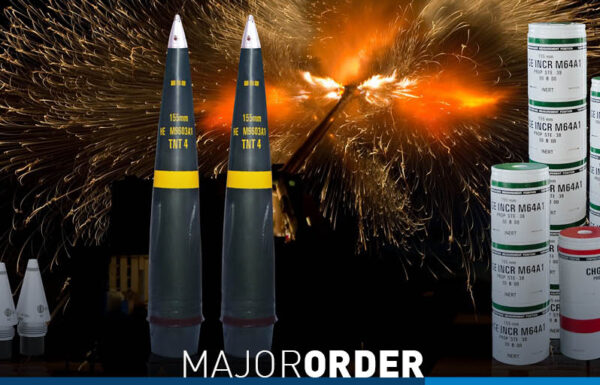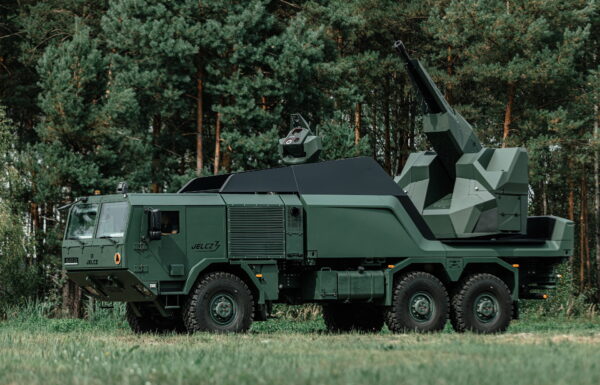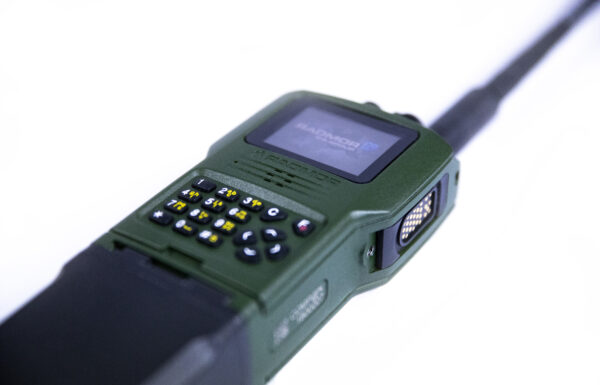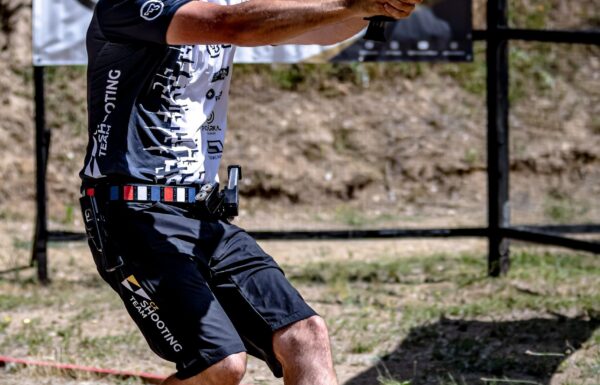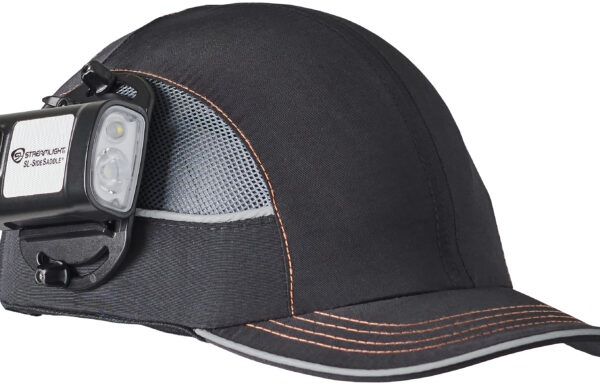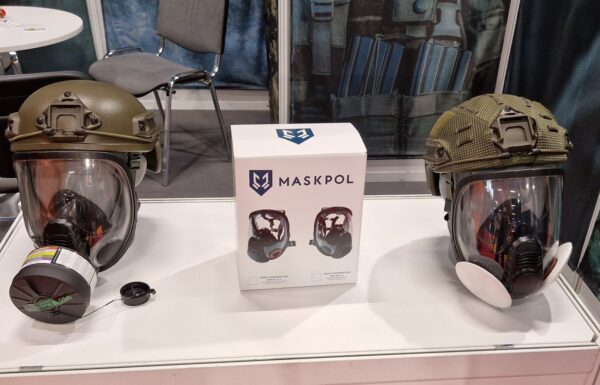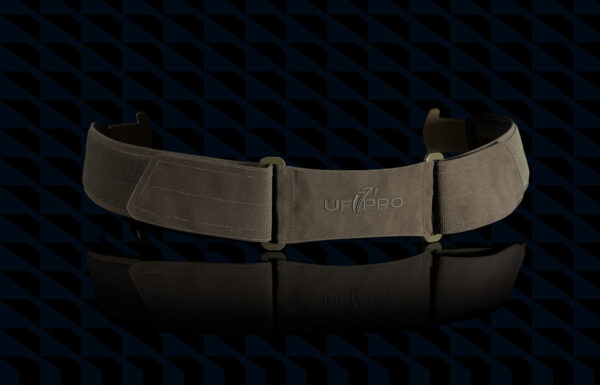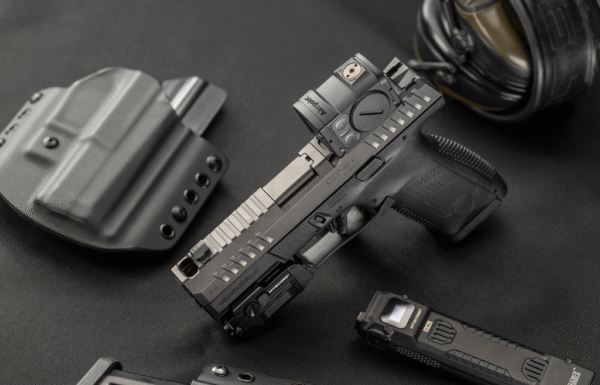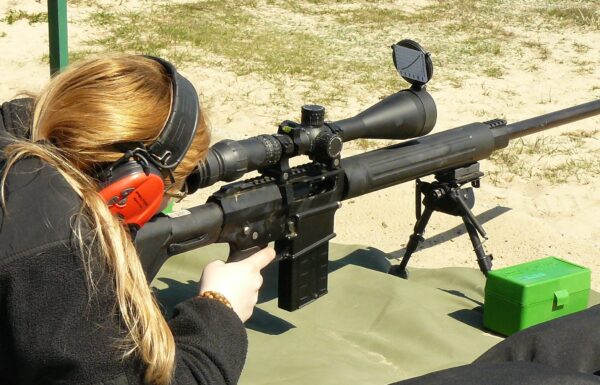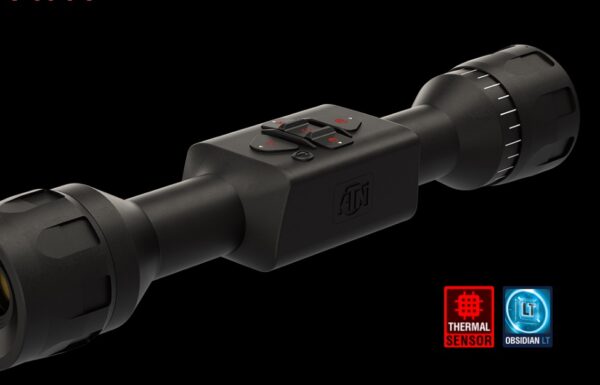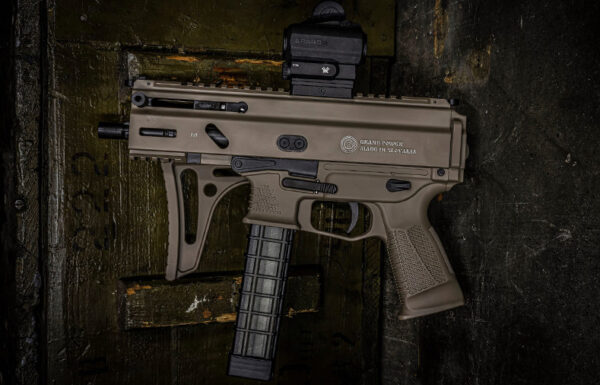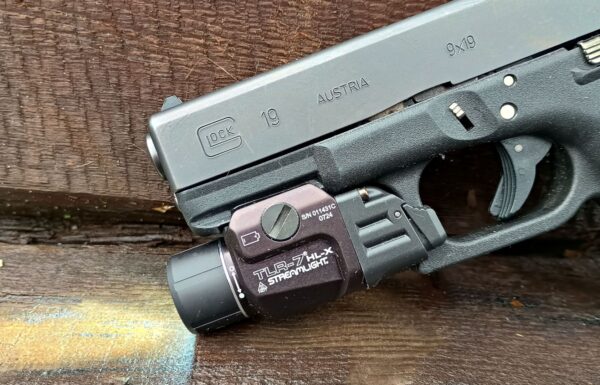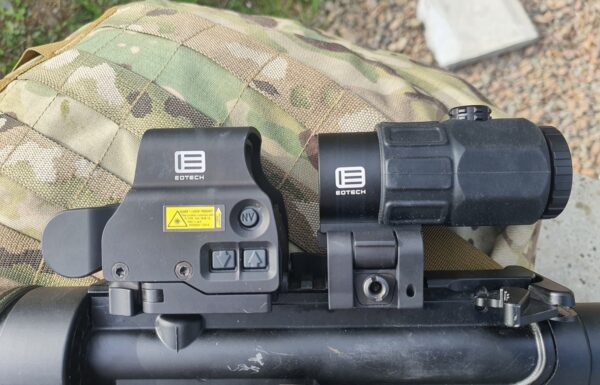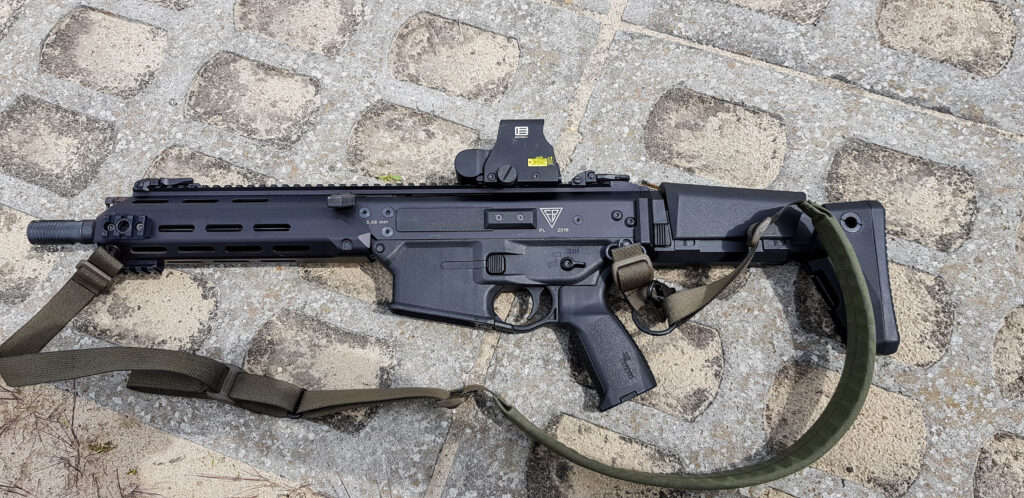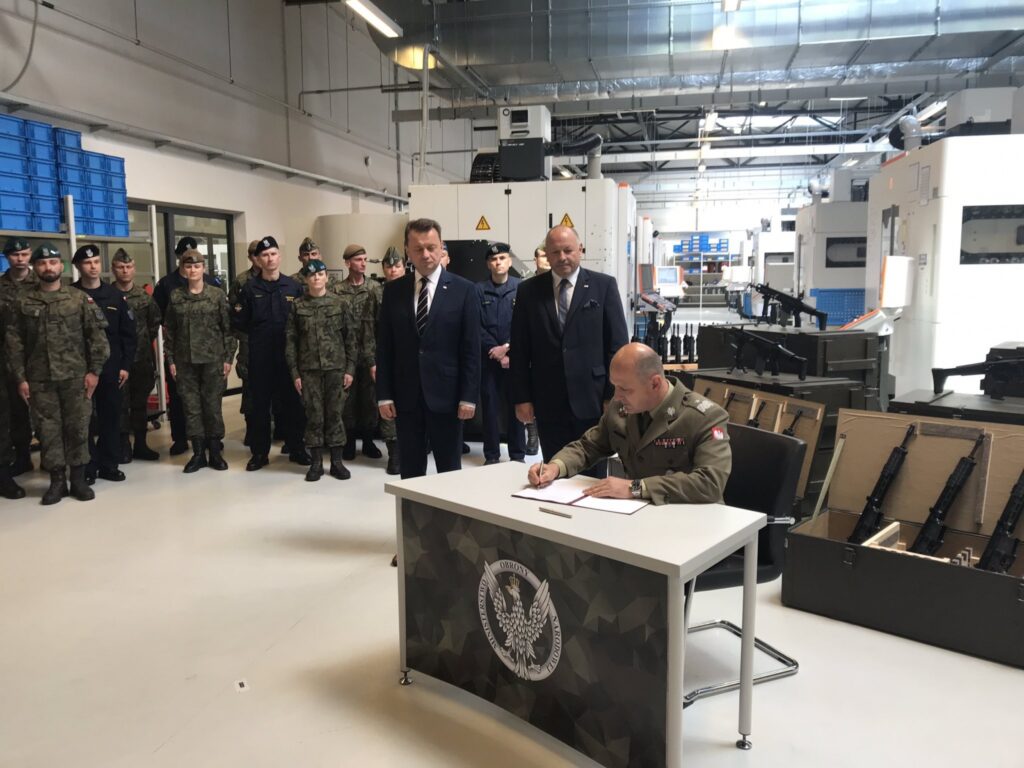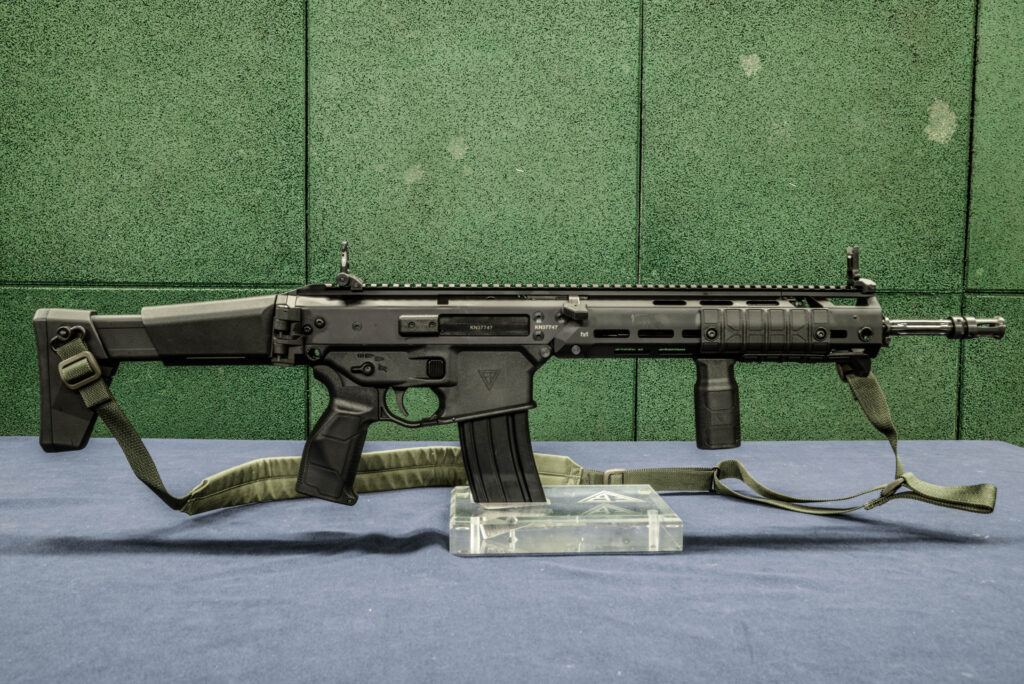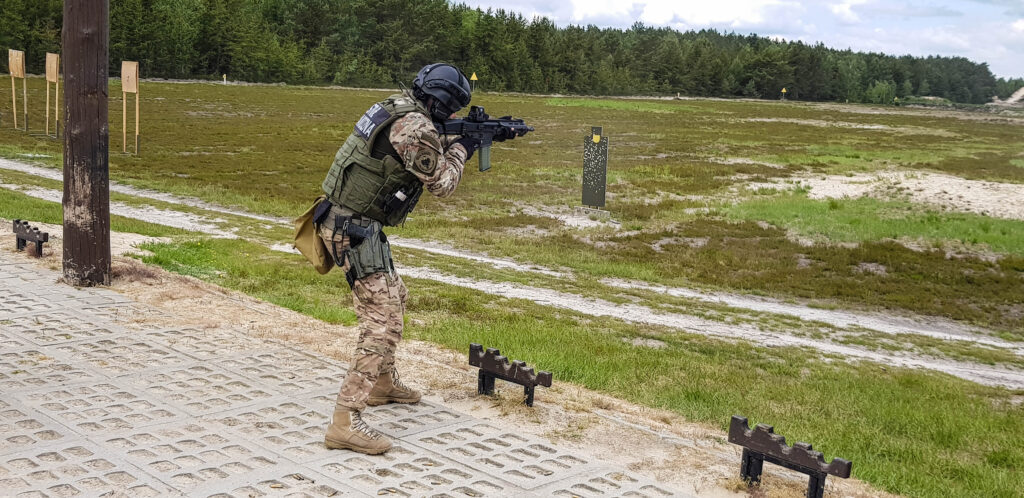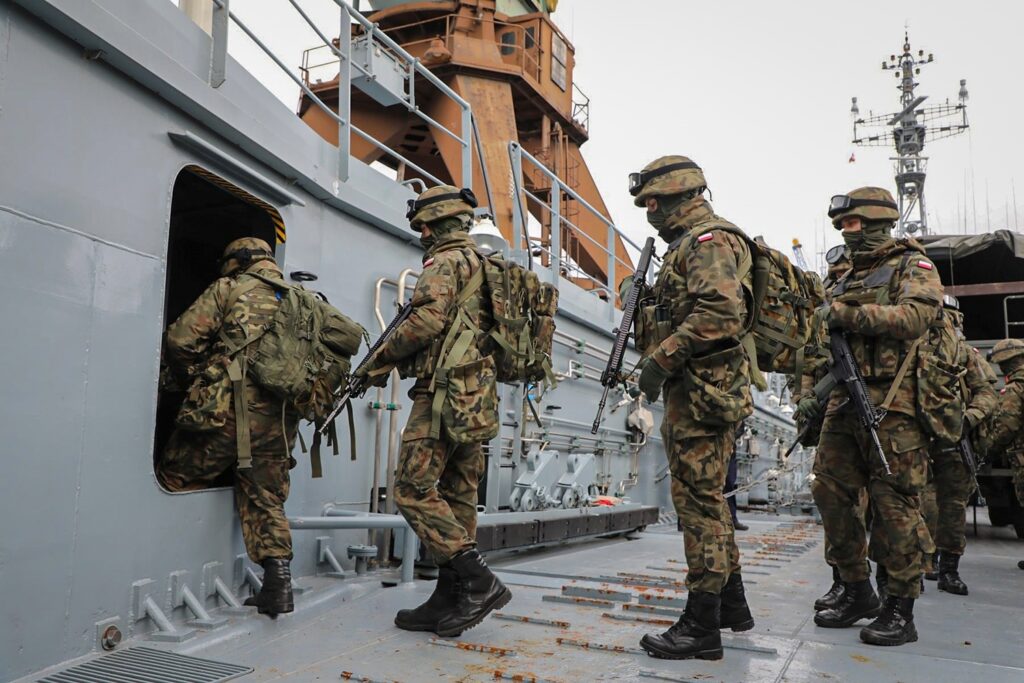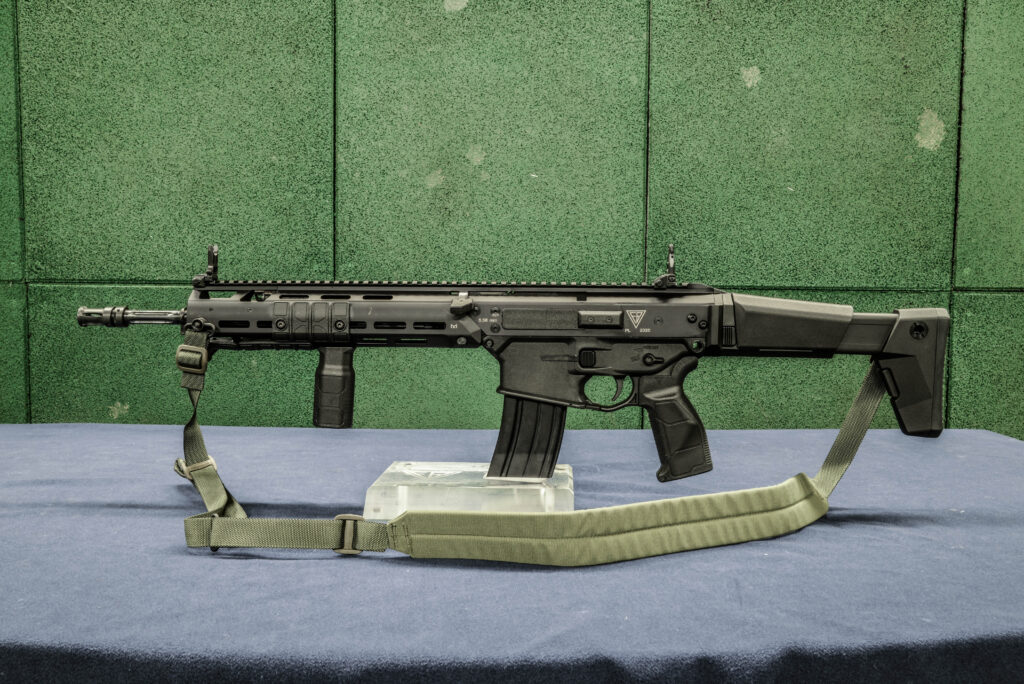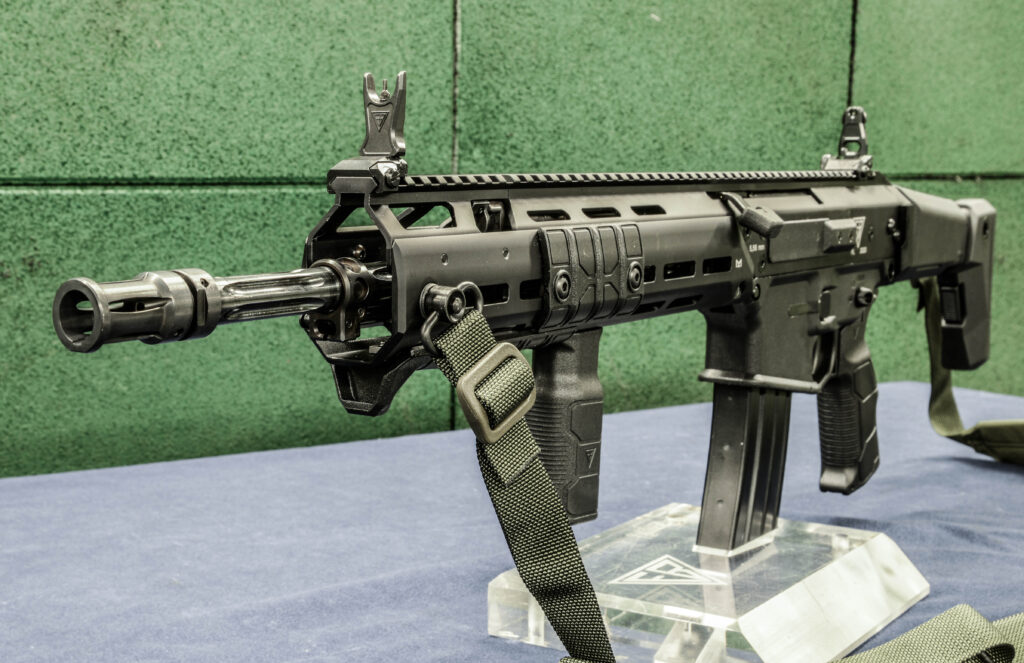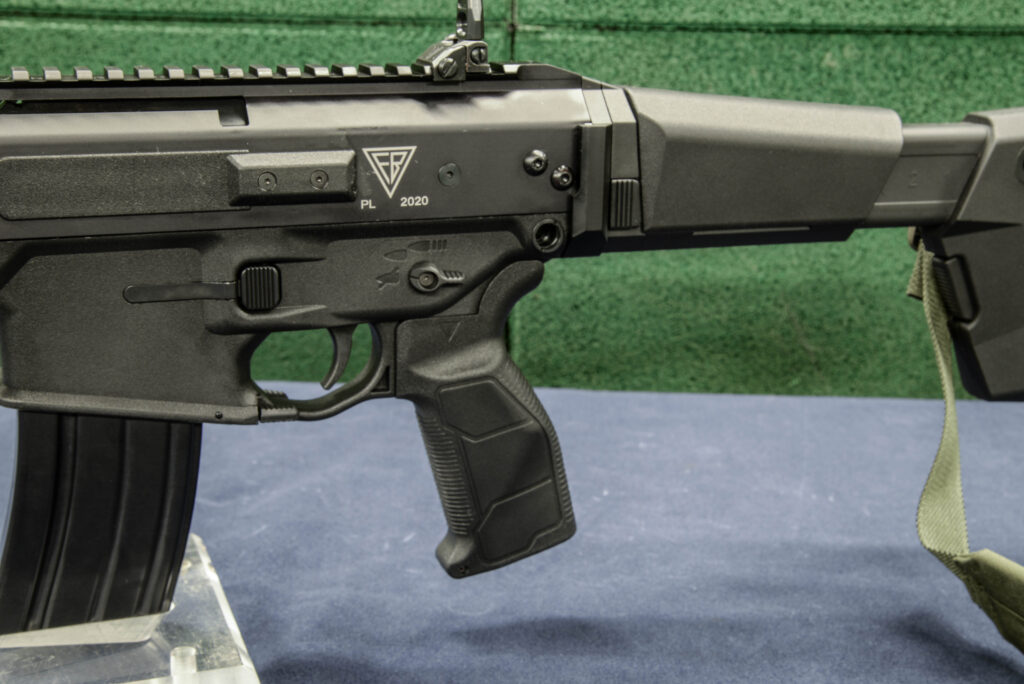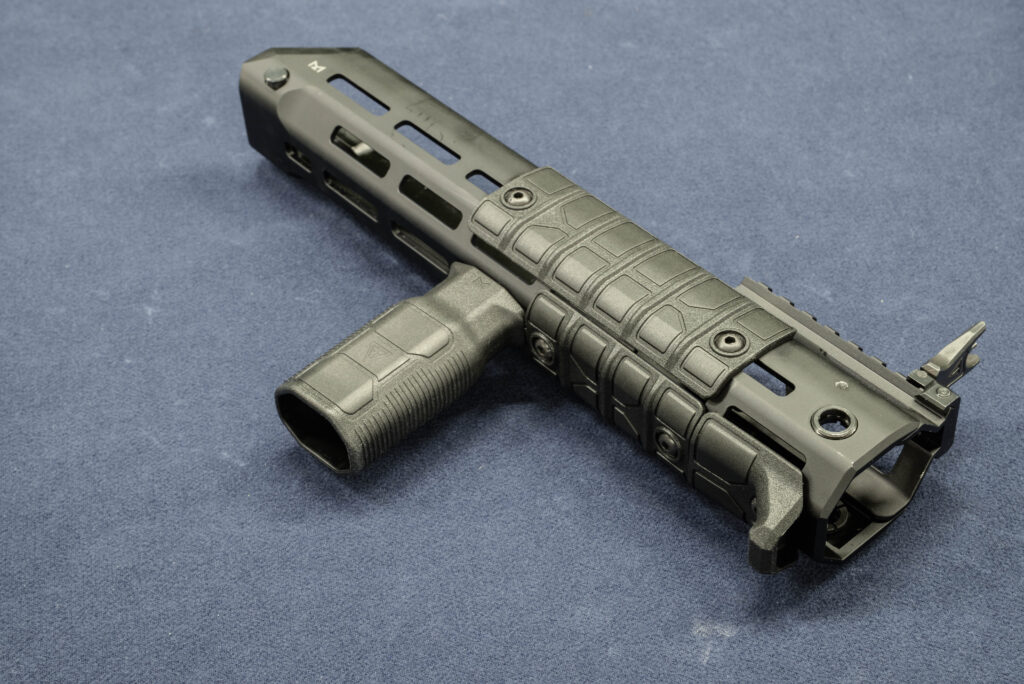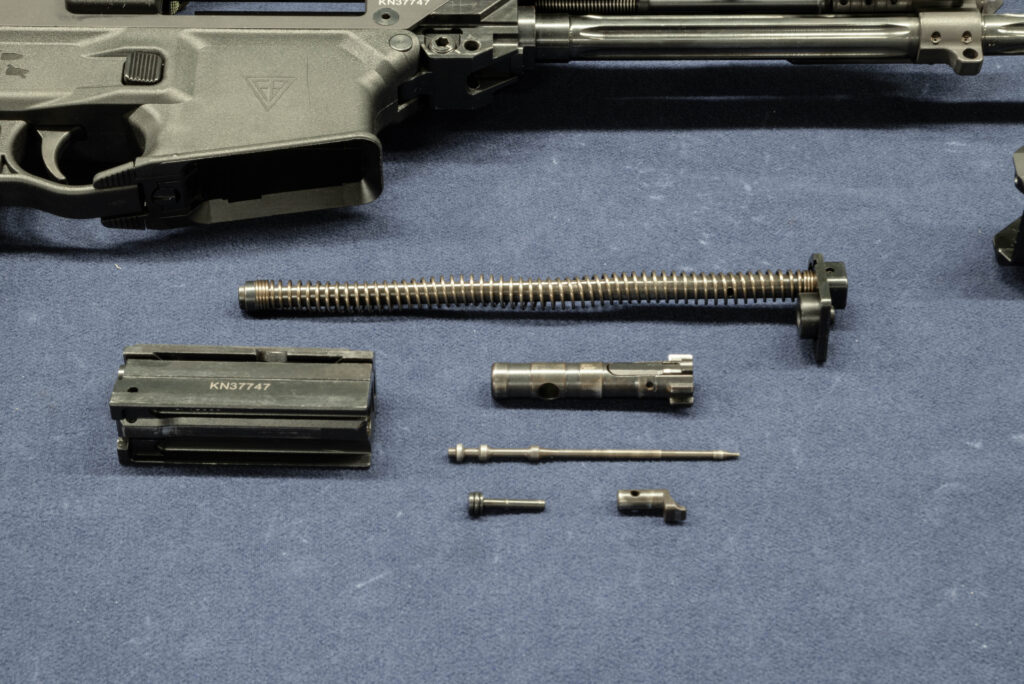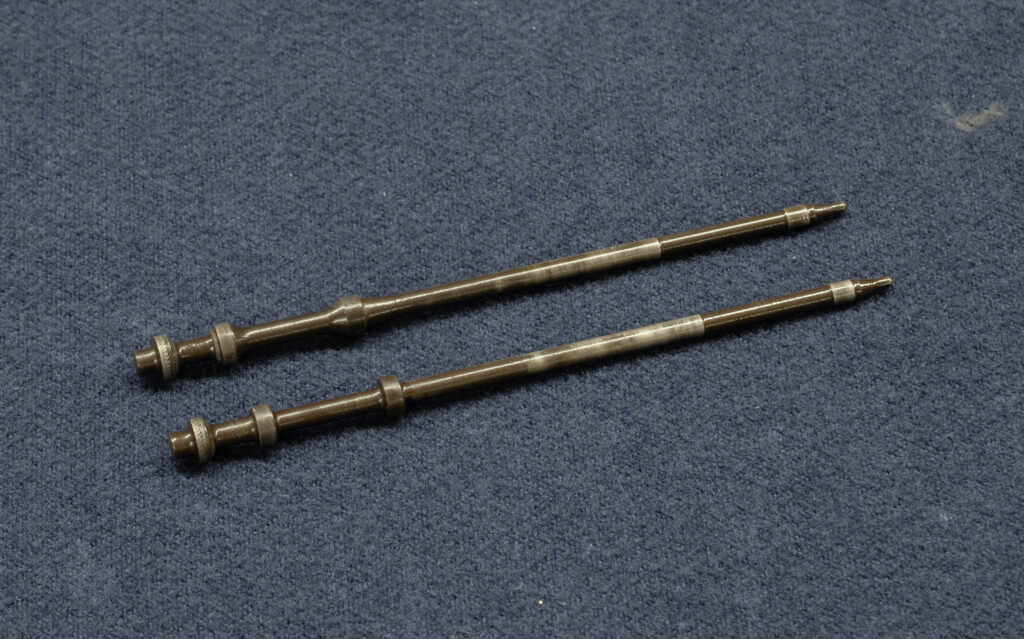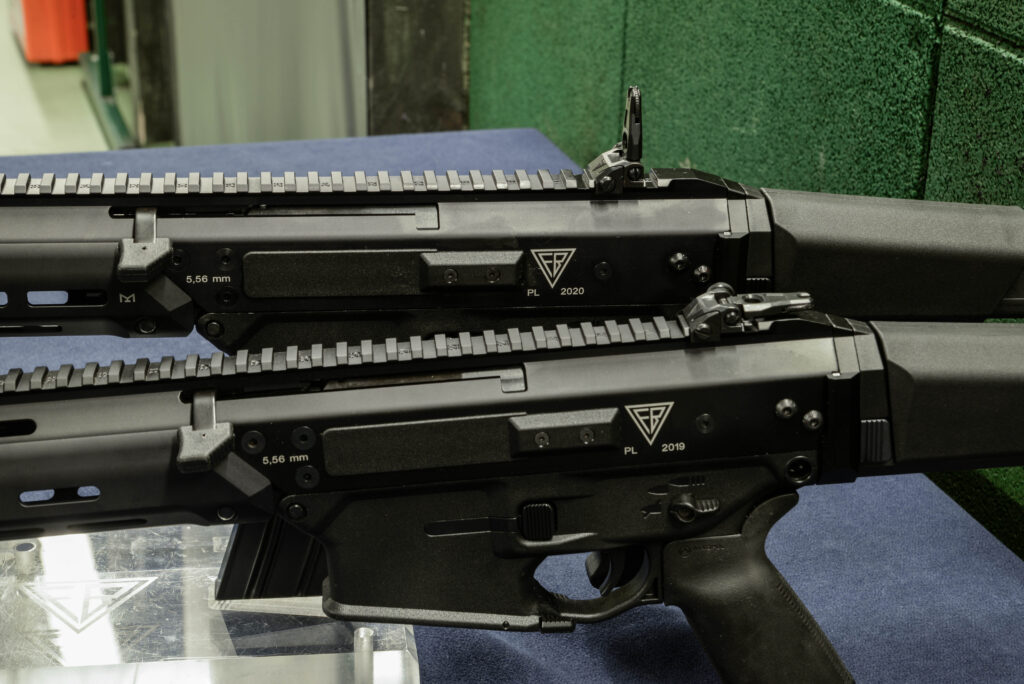A contract for the delivery of over 18 thousand units of Modular System Broni Strzeleckiej (Modular Firearm System) was signed on the 8th of July 2020. Many sources repeated an incorrect claim that the purchase covered the modified Grot A2 version. However, the same assault rifle was ordered now as it was in 2017. Because of its modular construction, some parts were merely replaced with different ones. Advantages of modularity were misunderstood by both the military and the majority of commenters, including people who should have had a better grasp of firearm design.
70 thousand Grots
The initial contract was signed between the Nil unit of special forces and Fabryka Broni “Łucznik” Radom (FB). July’s order came from the Ministry Of Defense’s Armament Inspectorate Of National Defense Ministry with Territorial Defense Forces being the manager of purchased weapons. The seven-year contract is worth over 177 mln złoty (approximately 46 million dollars at the time of writing) and covers delivery of 18 305 Grot C16A2 assault rifles to all branches of the Armed Forces in 2020–2026.
It can be immediately seen, that the contract is not very profitable for the producer. Each yearly instalment is composed of 2615 units, a quantity which can be assembled in Radom in just a few weeks, while leaving the company idle for the reminder. The contract will not sufficiently support the company after they finish their previous deliveries of the initial order signed on 5 September 2017 during the 25th International Defense Industry Exhibition MSPO, with an additional annex on 30 September 2019. According to those, by 2022 Polish Armed forces will have received 50 737 Grot C16 FB-M1/M2 (MSBS-5,56KA0/A1) assault rifles. Together with the new contract, the Polish Armed Forces ordered a total of 69 042 new rifles of that type.
Weapons ordered in July will be equipped with extended handguards covering the gas regulator due to operational experience gathered by Territorial Defense Forces and Polish Land Forces. The final configuration of Grot C16 FB-M3/MSBS-5,56KA2 will also receive ergonomic pistol grips, and changes to cocking handle and the bolt group. Each rifle comes with eight magazines, a carrying sling, and a cleaning kit.
Beginnings
Let’s go back to the beginnings— the start of the 21st century at the Military University Of Technology in Warsaw. In the heads of a few military scientists and teachers, germinated an idea for a new Polish weapon system that would replace older weapons based on Kalashnikov’s design. They spent three years exploring the viability of bullpup construction based on Beryl during research project 0 T00B 029 24 “Construction and ballistic analysis and synthesis, and dynamic research of bullpup firearms” (2003- 2006) and concluded that it would be pointless. They figured that Kalashnikov-based designs reached the practical modernization limits and have no prospects for further development. Regardless of the accuracy of such findings (which are in our opinion premature, as proven by later development of Beryl 96D variant), it warranted funding for new research directions which lead to an actual breakthrough.
Further governmental funding was received in 2007, leading to research project O R00 0010 04 “Technological development, implementation, and examination of assault rifle modular firearm system in 5.56 mm calibre for Polish Armed Forces”. Work began in December 2007, in close cooperation with Fabryka Broni Łucznik-Radom. Representatives of the Military University Of Technology took on the task with consideration and dashing, engaging the press early on.
That provided the project with necessary publicity and reinforced the designers’ personal investment in the design, sustaining their willingness to promote it even now. Developers working at the Faculty Of Mechatronics, Armament, and Aerospace of the Military University Of Technology had really big ambitions. They wanted the new weapon to be more than a mere toy of a few scientists, more than a nice-looking prototype. They wanted it to be the first truly Polish assault rifle, modern and modular, to see regular use. Until now, Poland had no luck with native weapon designs, using foreign construction. When it seemed that the Polish-made 7.92 mm wz. 38 Maroszek semiautomatic rifle would reach serial production phase, the Second World War started, and the Second Polish Republic fell. This time was meant to be different.
Modular Construction
The result of the design is an unusual family of weapons. Polish scientists from Military University Of Technology and designers from FB Łucznik Radom managed to create an interesting, unique and modern construction. A firearm system that is truly modular. That’s the first secret of this design.
In practice, it means the users can selectively assemble the weapon elements. Times, when soldiers received weapons from a factory in fixed configurations without ability to change anything, were supposed to be gone. Modularity means that all constituent parts are replaceable. Don’t like the 406 mm barrel? Switch it to the 256 mm one. If stock is found unwieldy, it can be replaced with a model used by Americans in M4. Wrong calibre? Replace the chambered barrel and the bolt. Is the handguard too short? Pull a pin, remove the guard, pick a longer one. Done. Trigger pull is too rough for a marksman? Replace it with a different trigger module. Everything inside is held by screws making changes easy. Great, right? In theory, yes. In practice… We’ll cover it in a moment.
Let’s move to other secrets for now. Designers moved further with the weapon’s modularity. The second secret of MSBS is its universal receiver. It was designed to have classic stock attached, or a bullpup-style grip, depending on the choice of attachments. There was no such versatile construction on this planet before. In theory, it is a great solution. Quartermasters should be happy too.
One of the consequences of such design was the decision to make the cartridge case ejector work to either left or right. Otherwise, a left-handed user firing without a stock would have to deal with a lot of tiny but hot issues. That is MSBS another secret. Spent cases could be ejected to the selected side, depending on orientation. A bit complicated because of the intricacies of its workings together with the bolt, covered by a Polish patent. There are currently only two other patents for a similar solution in the world— the Israeli one, used in Tavor TAR-21 rifle, and German for XM-25 semiautomatic grenade launcher.
First MSBS`s were built for 5.56 mm × 45 NATO carabine cartridges (thus MSBS-5,56). It took the designers a few hours of after-work adjustments to adapt the rifle to 7.62 mm × 39 wz. 1943 (used by classic Kalashnikovs). A few years later, 7.62 mm × 51 NATO capacity was also implemented. Generally, the weapon can be equally easily adapted to more exotic cartridges, such as fancy 6.5 mm × 38 Grendel or 6.8 × 43 SPC—which have similar dimensions to 5.56 mm × 45, but also 6.5 mm × 49 (6.5 mm Creedmoor). It’s all easy because the weapon is modular.
Sounds great and revolutionary, right? 21st-century weapon for a present-day soldier. Well, yes, but not really. The problem is the military’s 19th-century mindset that is hard to leave behind. In other words, give a victorian-era human a smartphone, without a manual. What can be done when there is no cellular network available, no 5G around? We’ll return to that later.
MSBS, aka Grot
Everything went fine. It took ten years, two of which were wasted on the fierce struggle against military bureaucracy. After countless challenges, replacement of half of the weapons, joining the Titan programme, and further exclusion of MSBS-5,56 from the Polish “warrior of the future” project, after the creation of a completely new branch of the Polish Armed Forces—Territorial Defense Force. So many factors converged, finally allowing ordering weapons outside of a more complex gear frame.
On 5 September 2017, during the International Defense Industry Exhibition MSPO, a contract was signed between the Nil Special Forces unit (at that time the manager of equipment for the Territorial Defense Force) and Fabryka Broni Łucznik-Radom. The details were initially confidential, though it is now known that together with a later signed extension, 50 737 assault rifles MSBS were ordered. The name Grot (literally meaning arrow- or spearhead) was taken from the alias of Stefan “Grot” P. Rowecki, Polish World War Two division general and commander-in-chief of Polish Union Of Armed Struggle and later Home Army.
The construction received two designations. The producer used one issued by Polish Armament Group (PGZ)—Grot C16 FB-M1. C16 is the designation of the classical (thus C) stock variant with barrel length of 406 mm (16 inches). FB is a shorthand of the producer’s name (Fabryka Broni, i.e. Weapon Factory), and M1 refers to the first model. The military used designation intended for the Titan programme—MSBS- 5,56K (K refers to stock, “kolba” in Polish) with the addition of A0 for the initial variant.
The deliveries started in 2017 and will end in 2022. At the end of 2017, the base assault rifle variant passed the qualifications and was officially accepted for service. It was accompanied by a 40-mm underbarrel grenade launcher GP and knife-bayonet.
Tradition And Imitation
A small digression here. With all the sympathy MILMAG editorial office feels for Territorial Defense Forces, the new military branch has an annoying tendency to replicate American models. Combined with a national inferiority complex it leads to a weird “cargo cult”-like behaviour. Certain patterns are wholesale copied from the United States Of America in an undisputed belief their inherent superiority will magically make things immediately better. It’s a mistake, but one firmly entrenched in our national mentality.
That happened while the weapons` designation was chosen and showed a clash between narratives. On one hand, the Territorial Defense Force wants to refer to local traditions and stress their importance. On the other hand, the tradition immediately goes down the drain when they want to appear modern, and is replaced by superficial American style. Imitation without deeper reflection, for the sole purpose of fashionable association with Transatlantic wonder.
This clash can be seen in the naming. MILMAG editors can’t understand why TDF didn’t name their new assault rifle wz. 2017 Grot, which would follow the traditional Polish weapon naming pattern. Instead, we got an absurd alphanumeric designation which looks like it was copied from an American weapon ad. Weird A0 to A2, mixed with a length of the barrel in inches (which in Poland are completely foreign), the designation of classic (stock) version follows English spelling of the word Classic instead of Polish “Klasyczna”. The inferiority complex seemed to touch the metric system as well, despite it not being used only by four major countries.
I wonder how many of the people responsible for the designation know that A is derived from the English amendment? Likely not one of them wondered where the A in weapon name came from. Where is the great Polish military tradition now? Even Beryl was named better because it was designated as wz. 96, and the variants were deemed A, B, and then C (D was never mass implemented, which is a shame because it was the most advanced and worthwhile prototype). This is the end of the digression because the newly- -developed handgun VIS 100 could have been introduced as wz. 2017 VIS 100 as well.
Two Worlds
We could be excused for thinking that the story will end well, the prince will free his chosen one, marry the princess and everyone will live happily ever after. Not. Sadly, there is a whole swarm of flies in the ointment because the strongest advantage of the 5.56 mm calibre Modular Firearm System is its greatest problem on multiple levels. Let’s start with modularity. It is a wonderful quality. Except not for the military, at least not the one that runs like the Polish Armed Forces. The military hates the idea of soldiers tinkering with their weapons and making personal customization. The specific configuration and use it. That’s all.
The military didn’t want a revolutionary assault rifle. They wanted a better Kalashnikov and that’s what they expected. Honestly, a modified Beryl would suit the army for a few decades more. It was field-tested in Afghanistan and Iraq, it had everything needed and a tiny bit more. Accessory rail, finger grip on the safety, foldable stock, underbarrel grenade launcher. It even had a carbine version for those who were supposed to get a shorter version, though scopes were purchased in insufficient numbers.
So the military treated MSBS like a better Kalashnikov they wanted. Modularity? What modularity? Polish Armed Forces are still in the 19th century when it comes to bureaucracy, purchasing one preset configuration. And they will cut away any hand that tries to tamper with that configuration, preferably around the elbow just to be sure.
To make things worse, because the military was convinced they were purchasing improved Kalashnikovs, they sent people well versed with the old rifles to teach the recruits. The assumption was made that knowing Beryl means proficency in handling the new rifles. That was a recipe for a disaster. And it happened, though not in real life but in the way of thinking about the new Polish weapon.
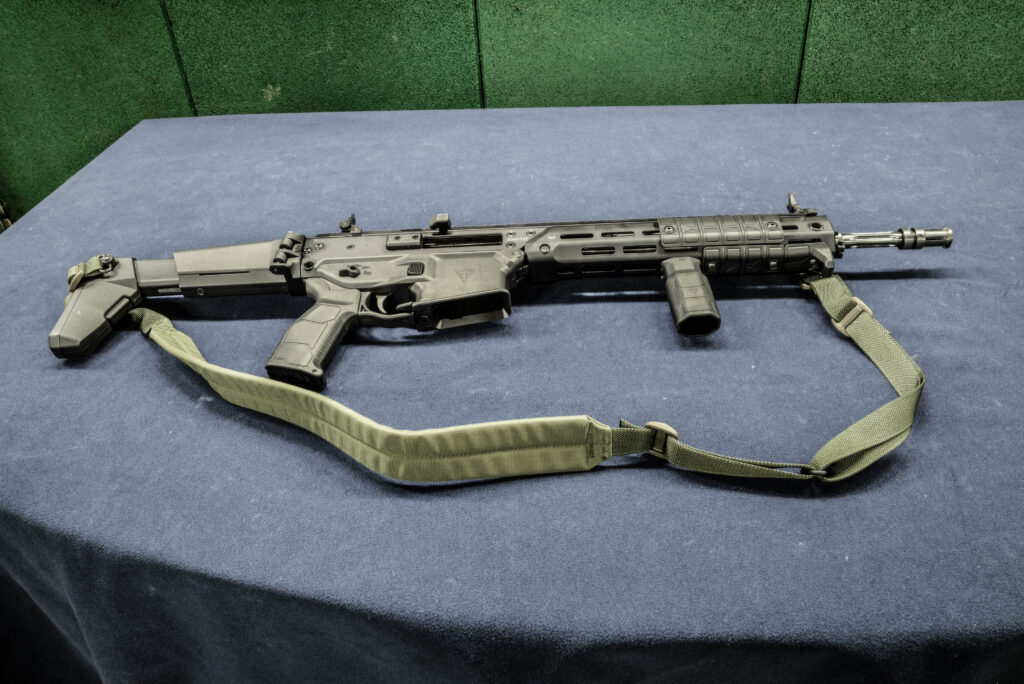
First Contact
Going back to 2017, when the first thousand of Grots reaches newly founded, formed from scratch, Territorial Defense Forces. Professional instructors selected by their commanders went through the training provided by FB Łucznik-Radom, firing and disassembling the new weapons. So far, so good. Most of them think it will be easy, they knew Beryl, they will handle Kalashnikov is Kalashnikov, after all. Except the new rifle isn’t an AK. Here comes the original sin. Weapons were purchased without proper sights. They have iron sights, nice, small and foldable, but they weren’t designed with the intent of being used as the primary targeting device— they are merely an emergency backup. Raise hand, who deliberately took the spare wheel out of the trunk and learned how to drive a new car using the spare wheel? Right. Since its inception Grot was supposed to be used with holographic sights and scopes if available, not the foldable, spare iron sights. Treating the emergency back up as a primary targeting device breeds problems. First, the primary iron sights should be durable, so the falls, crawling, firing, or pummelling an enemy would affect it no more than a spring drizzle. Such are the demands of the primary targeting device of any weapon. Back up ones are delicate. We don’t rush on the side roads at 100 miles per hour. If we start throwing weapons around, emergency sights will suffer.
Aperture sights are a novelty for Polish Armed Forces—while factory sight settings allowed for fairly accurate fire, the backup sights didn’t win soldiers’ hearts. Who likes the side roads? Territorial Defense Forces command quickly noticed the problem and started ordering red-dot sights.
Perfect (Im)perfection
A small digression regarding national mentality, or more accurately Polish autostereotype. Whole tomes were written on this topic. To put it in simple words, Poles are raised in an honour-based culture, a category usually associated with the vaguely defined “East”. Error is a loss of face, loss of honour, blemish on the curriculum. Errors can’t be made, they erase you. This stands in opposition to dignity-based cultures, usually associated with the “West”. There, making an error is another experience, one which should bring lessons and adaptation. Polish autostereotype. Fighting it resembles the struggles of Don Quixote De La Manche against windmills being watched by Sancho Pansa. Polish invention has to be truly revolutionary, the best, and perfect, outshining anything else. If it isn’t, if there is the slightest shadow of imperfection, then it is an utter failure, immediately consigned to doom. There is either a magical perfection or complaining that we are worthless. There is nothing in between.
Grot was supposed to be perfect for the user. It was supposed to never jam and never break. It couldn’t have any disadvantages. It was supposed to outperform everything else, be miraculously simple, fairytale easy to use. What’s more, because in Hollywood movies weapons need no maintenance, merely wiped with a piece of cloth before the mission, it was supposed to retain virginal purity through its service. Essentially it was supposed to be better than everything else. It was supposed to raise the spirit, inspire pride, and change the hearts of naysayers. Now people are shocked that it is a mundane weapon. Occasionally it jams, especially when firing blanks. Sometimes parts break. Grot is not wonderfully simple, though it has excellent ergonomics and functionality. It isn’t so easy to use, in large part because of its modularity. An advantage became a quirk. Sadly, unlike in video games, it needs cleaning and maintenance. It won’t work well otherwise. It shocks and disappoints many people.
Missing Parts
What weapon the Polish military needs? It is a big question that keeps returning like a boomerang. The uniformed decision-makers hadn’t put a lot of consideration to that question, though, and intend to replace currently used models with new, one-to-one. Beryl will be replaced with the baseline Grot C16 with a 406 mm barrel, while Mini Beryl will be switched for Grot C10 carbine, with a 256 mm barrel. The later will also replace 9 mm × 19 submachine guns PM-84P and PM-98.
The Titan programme also includes a bullpup carbine, though it is hard to say exactly why. Obviously, without introducing at least a few of them to active service, it would be hard to sell them abroad, but their utility is limited when the military fails to take advantage of modularity.
A bullpup carbine with a short barrel could be used by vehicle crews, but even there, a classic carbine might end up being a better choice because of the benefits of standardization.
A bullpup carbine is better balanced with an underbarrel grenade launcher. It’s hard to imagine an institution whose conservatism is comparable to the Catholic Church allowing troops to mix classic assault rifles, classic carbines, and bullpup carbines with grenade launchers. On the other hand, Polish Armed Forces can surprise.
Going back to the replacement decisions. Beryl is being replaced by Grot C16. Mini Beryl can’t be replaced yet, because while the MSBS-5,56K assault rifle was removed from the Titan programme, the carbine variant is still a part of it. Qualification tests are expected to end in the first quarter of 2021. In other words, replacing models one-to-one basis is impossible at the moment. At least the Territorial Defense Force has no pressing need for carbines.
Border Guard was the only formation that purchased shortened versions of Grots with “civilian” 267 mm (10.5 inches) barrels together with a replacement 406 mm barrel. After getting used to them, the border guards are not complaining. They are the sole users of MSBS-5,56 carbines, though not the “military” 256 mm (10 inch) barrel.
Single-shot grenade launchers GP are not available yet, either, despite their design being finalized in late 2017. Underbarrel version is designed, ready for production, merely waiting for orders. The Army doesn’t want to purchase them, because the Minister Of National Defense would need to pull it out of the Titan project first. But before it will be done, the development of a low velocity 40 mm × 46SR cartridge needs to be finished, and it is nowhere near being done. Because of that, the Polish Armed Forces lack replacement for wz. 74 carbine-grenade launchers, or more modern SBAO-40 carbine-grenade launchers produced by ZM Dezamat.
Can we start selling firearm systems abroad without introducing them to the producing nation’s military service first? It can be done, but it is hard. First, all the missing elements need to be delivered to the Polish Armed Forces. Hopefully, it should hap pen in 2021.
Original Sin
On one side inexperienced instructors, on the other weekend warriors. The units full of eagerness and enthusiasm, but filled with ideas taken from American action movies and video games. Newly formed branch of the military. Lack of procedures, patched with dedication. Military conservatism mixing with the civilian approach. What could go wrong? Everything.
How did it look in practice? An undereducated instructor appears on the scene. He didn’t bother with reading the manual, because why would he? Real men don’t read manuals, a gun is a gun, and this here is just a better Kalashnikov. More actors step in, an unruly mob of folks coming from different environments playing soldiers according to their ideas and imaginations. Give them sixteen days of extremely intense training. In a typical military fashion, there is either no time for anything, and then there are long hours of boredom when nothing happens.
There is a single day to familiarize oneself with the new rifle. That’s all. Later you walk with it, sleep with it, carry it everywhere. Yes, including the showers. Grot saw a lot, Grot remembers. No time to learn its functions, no time to get to know its mechanisms. Here you pull, there it goes boom. And now run and do your chores.
It’s worth noting that the trainees don’t get to see the manual. It lies safely and securely in the locker and waits for an unannounced inspection. When it happens, you can proudly announce that everything is correct and the numbers match. Manuals are new and shiny. Why would you let some grunts handle them? They might damage or lose them.
When it comes to weapon manuals describing them and their use, the Polish Armed Forces gave up long ago anyway. Departments responsible for issuing those were closed down, and now the instructions are provided by producers. What can go wrong when an engineer writes a set of rules for the military?
FB Łucznik-Radom provides excellent instructions for their weapons. Excellent for authors writing texts covering weapons, for weapon aficionados, for collectors. We love them, especially knowing the western analogues. They cover everything, including gunsmithing hints. Marvel. Except they are not worth a damn for a soldier. A soldier needs to get eight pages on a greaseproof paper or foil that can be folded and fitted into a uniform’s pocket. And the key parts need to be highlighted: how to put on the rifle sling and how to clean and maintain it. That’s all. He isn’t getting a doctorate regarding every spring and pin.
Corporal’s Tall Tales
It’s hard to believe what myths, legends, and fairy tales regarding Grot are circling in the Armed Forces. A poorly trained instructor will invent anything and blame anyone to avoid admitting lack of knowledge. A bad workman blames his tools. And so the weapon is bad. Never soldier. It’s bad because it occasionally jams, needs to be cleaned, and it isn’t made of adamantium. That is, without maintenance, it will rust. The fact that other designs all over the world work that way is no excuse. MSBS was supposed to be perfect. Self-cleaning. Not-jamming. But it isn’t, so it got to be named “grit” or any other punny name anyone can come with. The tool is always to blame, remember, remember and march off.
So, some of the legends. The first one, that you don’t have to clean this weapon. Well, Americans went through it in the sixties with M16. It didn’t work. People died. Thankfully, in Poland no one died, but the belief stayed. The second one, that you can’t remove the barrel for cleaning because you will misalign the screws, and it will lose accuracy. People repeating this one probably never replaced barrels in automatic weapons. Let me give a hint—there is no accuracy loss. Screws don’t misalign in Grot even after a thousand barrel replacement.
One of the most common myths is that the weapon is in an early stage of development when all kinds of issues can happen. No, it isn’t and no, they can’t. It is a thoroughly tested construction that would not pass the qualifications and reach the army if it had any issues. We’ll talk about the tests later, because there are some caveats there.
Another fairy tale are stories that as a Polish construction it is made out of inferior materials. You have to remember, if it isn’t perfect, it has to be inferior. Always. In reality, it’s made out of identical materials as other weapons, including Beryl or AK. The same materials, and made according to the same military norms. If there were deviations, they wouldn’t be delivered to the military.
What’s the issue with materials? It’s sort of funny because some of the Territorial Defense Force volunteers are actual weapon owners. People who spend hard-earned cash to purchase the cheapest Chinese AR rifle proudly stamped with Made In USA, of course. And now they are convinced that no weapon rusts because their weapon didn’t rust after an hour at a shooting range. When asked how many times they shot blanks, how many times they crawled with it, how often they kept it outdoors twenty-four hours in various temperatures and humidity levels, they do not answer. They haven’t done anything like that. But Grot was supposed to be perfect, and if it isn’t perfect then it has to be the worst in the world.
Rust And Praise
Grot rusts. You can find photos on the internet. We’ll come back to those photos. Let’s start with the rifle’s construction. The receiver and handguard are made of aluminum alloy, stock, magazine, and grip are made of plastic. What can rust when the main parts are made out of non-corroding materials? The parts are made out of steel— barrel, stock hinge, bolt group, firing pin, springs, screws, and pins. Yes, if the weapon receives inadequate care after extended use, damage, with protective coatings gone, the corrosion will progress. Physics won’t change. It happens with every weapon on Earth. We could cover everything with chrome or protective coating, but the price of the rifle would grow exponentially. Only a wealthy aficionado could afford that.
How can that be avoided? Cleaning and maintaining the weapon adequately. And keeping in mind that it is normal. Like washing your teeth before sleep. The conviction that other weapons wouldn’t rust in the same conditions are fairy tales. Steel parts will be damaged after extended use, sooner or later becoming more vulnerable to corrosion. Weapons need to be cleaned. There is no other way. The more intense the use, the more often it needs to be cleaned. If we step out of the world of computer games and action movies into the real world, every military force that sees actual battles instead of rotting in the garrisons for decades, has clear regulations to that effect. Even special units operating behind the enemy lines follow that. One third sleeps and rests, one third keep watch, one third clean weapons. There is no other way.
Going back to photos shared on social media that showed corroded rifle parts. It’s sad and terrifying at the same time, how the people doing that are not understanding they are presenting evidence of their own failure. Soldiers that understand the role of their primary weapon would not allow that. It’s their main weapon, during the conflict it is the key to their survival when you have to shoot the guys on the opposing side.
Such photos can only be posted by amateurs, people who joined the Territorial Defense Force a moment ago, and still no one taught them the basics. It is the level of misunderstanding equal to posting photos of dirty and wet boots after going through the muddy ground. After such a walk, the boots will be dirty and wet until cleaned and dried. Shocking, right? It can be surprising how people don’t understand the correct approach to weapons. Particularly affected are rifles used for the sixteen-day training. They passed multiple hands of green-horned recruits that are supposed to be forged into actual soldiers. Those rifles are the most weathered, possibly even damaged. That’s why they need the most care because it is a valuable lesson how to keep weapons functional.
Unfortunate Regulator
Every story holds a grain of truth. In the case of Grot, it’s the issues with the dropping off gas regulator. Let’s focus on the construction of the rifle itself. MSBS has a barrel with a visibly extended, large gas regulator. According to the manual, it has two positions. One is used for nominally “normal” conditions and with a silencer. The second setting is supposed to be used during “heavy” conditions. It could be disputed if that makes any sense because rifles don’t need regulators. It acts as a cap for the gas tube and the piston moving inside. Design-wise, it would be there anyway, so it got the additional function to excuse its existence. We need to move back in time to understand the issue with the regulator. The more we focus, the more it can be seen that constructors of the Military University Of Technology and FB Łucznik-Radom made an excellent weapon designed for shooting. The weapon that is accurate, ergonomic, functional, and can be trusted during firefights. MSBS works reliably on any suitable ammunition, be it Polish 5.56 mm × 45, or any other producer following the STANAG 4172 standard. That isn’t simple, and not every, even high-quality, construction is capable of that. Usually, each rifle model needs ammunition that produces a very specific pressure and a specific burning time of the propellant. It will jam on other ammunition, as many commandos learned in various situations. Grot doesn’t have that problem, it’s “omnivorous”.
That’s the elephant in the room—Grot was designed for shooting, not for carrying. In a military force, weapons are carried 99% of the time and shoot during the remaining 1%. The clash of those two worlds lead to unfortunate results. This weapon handles shooting brilliantly. Carrying it is an issue. It involves moving it around on a sling, on the shoulder, on the back, however, it is convenient for the user. Having a big, protruding element causes problems. Soldiers ride the trucks, walk through forests, brushes with branches, bushes, and gear carried by squadmates. During all that movement, the gas regulator might switch to another setting, being secured in its current position only with a simple latch, the latch that might have different tension in different rifles.
It’s not a terribly big issue when it switches into “heavy” conditions. Nothing bad will happen. But if it’s pulled in the right way, the regulator will switch into the disassembly position and might fall off, and be followed by the gas piston. Occasionally it happened when the weapon fell off the shelf at the shooting range, switching the regulator position.
It should not happen. There are over 37 thousand Grot rifles in the military. According to the data provided by the Territorial Defense Force, the issues with the regulator were reported in 0.31% of used units. Soldiers dealt with that in a few ways. The dumbest was using a zip tie to secure it to the handguard. Done. Except that’s the hottest part of the weapon and the plastic melts. Smarter soldiers secured the regulator with a piece of wire. That made much more sense. There were other solutions, going as far when the crew replaced original regulators with their own creations, occasionally quite complex. Shame they weren’t widely adopted.
Bolt Catch
The Territorial Defense Force informed that three issues most often reported by users were: tearing away the cocking handle knob, loss of gas regulator, and damage to the bolt stop (0.19% of delivered units, as of September 2020).
Another issue reported was bolt catch handle breaking away (approximately 0.40% issues). Dual reasons were causing this issue. The plastic handle could get tangled in the sling and torn away. Additionally, it was discovered that when rifles were incorrectly packed to the transport chests, the handle was damaged as it kept striking the walls of compartments. That fault was clearly caused by carelessness.
19th century regulations
So, why those elements weren’t replaced or the barrel modified? Well, we are going back to military conservatism. Modularity doesn’t exist. When a problem occurs, you have to replace everything without changing anything. If you change too much, you need to redo the tests. Documentation circulation from the century before the last one assumes that there should be no changes, and if they happen, they need to be the very last resort.
That’s why instead of changing the barrel construction, the problem was evaded by ordering a longer handguard which will conceal the extruding regulator. Holes were cut on the sides of the new handguard for manual switching of the regulator’s position. The problem is gone with no new test needed.
Indeed, this solution will improve grip and eliminate the majority of problems with regulator switching accidentally. Let’s say it solves 98% of such accidents. It won’t eliminate one issue, though—soon, a carbine is supposed to appear. What kind of handguard will it have to avoid problems with the regulator? Evading problems instead of solving them will lead to more such conundrums. I suspect the carbine handguard will get an extension too, but only a bit, to cover the gas regulator, but how will it be switched when a switch will be needed?
Carrying Sling
Carrying Grot was causing issues from the beginning. The soldiers were not taught how to properly attach the sling and how to utilize it. What’s worse, such instructions were missing from the manual. It might sound simple, but you need to learn how to connect the sling to the rifle correctly. You won’t absorb this knowledge by rubbing the stock. There is still no documentation on how to fit the sling well.
To make things worse, a super- advanced solution from American ads was picked— QD sockets. It’s a great toy for Sunday shooters visiting shooting ranges, but it isn’t that good for simple grunts. They need tested solutions, adopted since World War One. Catch, loop, simple strap without philosophy and combination. Infantrymen, beyond being land creatures, don’t like complications.
In theory, everything should be right. In practice, hanging a few kilogram of a rifle on two QD sockets ended being problematic. Supplier of the sockets messed up too—some of them should not be installed on weapons. When carrying the weapons in varied terrain, those two points are subject to shifting loads. Sockets are torn out of the stocks or sling detaches from the sockets. Sure, Łucznik is at fault here, they could have tested received components better. That isn’t the end of the problems, because in the first version of Grot A1, sockets were placed on the inclined parts of the side. It’s not hard to guess that the unruly rifles turned upside down on various occasions. Sometimes, soldiers fail at attaching the slings because they have never been scouts nor learned the knots and end up surprised watching their weapons fall. Results? The weapon hits the hard surface after a drop from significant height in the worst possible moment. As you can guess, one out of thousand such falls ends with damage, usually of the plastic cocking handle.
Delicate Grip
Cocking handle construction is not the best either. Someone didn’t think it through while deciding to put two plastic covers over a steel handle. Each hit coming from the right angle makes the steel core act as a wedge toward the plastic pieces, shattering them. The rifle can still be reloaded by pulling the metal part of the cocking handle, but it’s inconvenient and you can easily cut your fingers. According to the Territorial Defense Force, damage to the cocking handle knob was the most commonly reported problem with the weapon, affecting 1.58% of 36 thousand rifles delivered up to September 2020. That’s almost 600 damaged elements.
Cleaning And The Barrel
the only weapon in the world with a universal receiver for stocked and bullpup variants. The idea was progressive and worthwhile but it leads to certain solutions that can surprise people used to more conventional constructions.
The main result of the idea is a large receiver with an extended, half-open profile. Universal— which means it can be used to construct a weapon with a stock and magazine in front of a pistol grip, or a bullpup, with magazine behind the grip. One can marvel at the originality of the design until the first cleaning. Grot is the only construction in the world that doesn’t allow the removal of a rod without disassembling the barrel first. That’s a negative side effect of the revolutionary ideas.
Cleaning the interior of the receiver from the side of the barrel, gas tube, piston, and surrounding parts is not particularly important. It reveals one of the quirks of Grot. Without using the rod, it’s almost impossible to push out a dirty piston. If you don’t remove the barrel and use the rod, the piston will stay within the gas tube.
Flying Device
Because of those peculiarities, soldiers who decided to not disassemble the barrel—either scared of the complexity of the operation or believing the fairy tales about screws misaligning when the barrel is removed, picked a different course of action. Simply speaking, they hit the barrels against hard surfaces until the piston falls out.
Smart? Not really. Quite the opposite, it’s very dangerous. Multiple hits can damage the muzzle device or its mounting pin. Effects? During the firing, the muzzle device can fall off.
What’s worse, if the bullet hits it, the shrapnel can injure colleagues nearby. Damage to the mounting pin can have an impact on firing blanks, causing it to intercept energy of the expanding gases, which can tear away the damaged muzzle device and propel it as an improvised projectile, again endangering colleagues nearby.
Showing off photos of such damage on social media is confusing. Apparently, their author doesn’t understand the cause-and-effect relation between prior mishandling of the weapon and the following failures. Maybe he slept during the physics lesson and doesn’t understand conservation of momentum? Anyway, the problem concerns 0.01% of rifles delivered by September 2020.
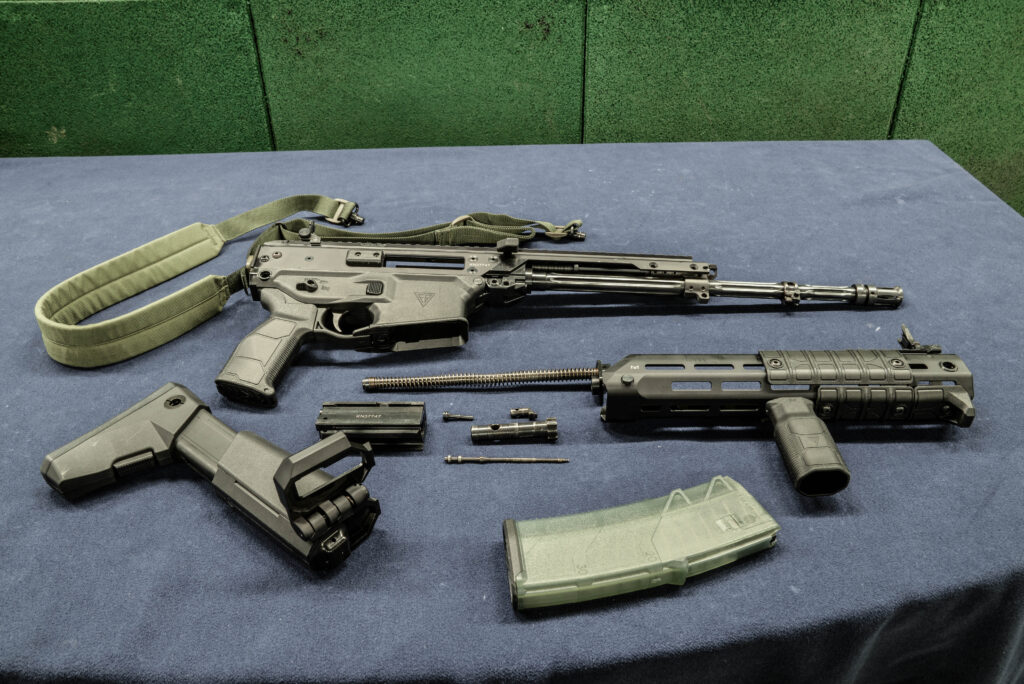
From A0 to A2
Failure to understand modularity led to a clash between two worlds. It led to artificial rifle names. That famous designation from A0, through A1, to A2. Many people, especially those with little knowledge of firearms, were convinced that Polish Armed Forces purchased multiple models of the new weapon, with each more polished than the previous ones. Nothing could be more wrong!
It’s time to understand it is the same rifle. Occasionally the Territorial Defense Force calls them variants, but it’s still an exaggeration. The whole difference between Grot C16A0 and C16A1 is the different handguard used. First used Łucznik’s own accessory mounting system instead of Magpul M-LOK standard, preventing the use of standardized NATO accessories. Early handguards also had QD sockets on the inclined lower sides. Handguard A2 has standard M-LOK rails and QD slots on the flat sides. There are no other changes. All of the new elements can be put on the older rifles, magically turning them into the new “model”. That shows we are speaking about the very same weapon, merely in a different configuration and at the same time explains the power of modularity. Details change, tested mechanisms remain the same.
Longer Handguard
Grot C16 rifle in A2 configuration has just a few parts replaced with newer designs. That includes an extended handguard, with attached NATO’s accessory rail STANAG 4694, connecting to the rail at the top of the receiver. While our photos show iron sights attached there, we advise against following that pattern. Iron sights should be moved to the far end of the top rail for a more stable mounting to avoid misalignment.
The handguard has, like A1 version, M-LOK mounting points. In its front part, two QD sockets were placed symmetrically on both sides to attach the sling. There were some experiments with the construction, with the first 50 rifles having slightly shorter handguards but finally TDF decided to extend it to the bayonet mount.
Covers and grips
Additionally Łucznik delivered three plastic handguard covers, two longer on the sides and a shorter one for the bottom. They also designed a vertical foregrip, and a hand protector intended to prevent the user’s hand from sliding on the hot barrel. It might not be important for 406 mm configuration, but it will matter in shorter models.
Why three covers? Well, Grot is like a Ferrari and has a grand total of six “exhaust pipes” spread below the gas tube. They release the hot gases near the place where the user’s hand holds the handguard. This dusts the hand, and with intense firing might also expose the hand to excess heat. Normally, without going quickly through multiple magazines, covers shouldn’t be needed.
Pistol grip was replaced as well with Łucznik’s own design to make the Polish producer independent from the whims of foreign suppliers. The grip has a distinctive shape and has an empty interior, allowing keeping of small items (such as batteries) inside. There was an early plan to attach side inserts made of foamed plastic to improve grip. Another important change was making the cocking handle much thicker, to prevent further breakage and falling off. Shape of the metal part inside might have been changed as well. Those changes should which are considered to be 3-4 times more stressful to the construction than live firing (i.e. 1000 dry shots equates around 3000-4000 actual shots). Sadly, reinforcing the pin demanded widening its housing. Because of this, changing Grots from A0/ A1 to A2 configurations requires replacing the whole bolt and not only the firing pin. It’s still the same Grot, though. Carrying Sling The last change is the introduction of two point carrying make that part more durable.
Stock hinge was replaced as well, changing the angle of latch keeping the stock folded. It prevents its accidental unfolding.
New Firing Pin
The biggest change—concerning the very firing mechanism—is switching the firing pin to a more durable one. While by September 2020, only 0.20% of comments referred to it, it was considered a worthy improvement. There were issues with some pins cracking after a high number of dry shots, which are considered to be 3-4 times more stressful to the construction than live firing (i.e. 1000 dry shots equates around 3000-4000 actual shots). Sadly, reinforcing the pin demanded widening its housing. Because of this, changing Grots from A0/ A1 to A2 configurations requires replacing the whole bolt and not only the firing pin. It’s still the same Grot, though.
Carrying Sling
The last change is the introduction of two point carrying sling, with extended quick adjustment part. In other words, because soldiers were having problems with the correct attachment of the sling… It was replaced with a simpler one, with a more limited range of adjustments, making the Grot more like Kalashnikov. The sling is also in a slightly different color.
TDF Impressions
W swoim komunikacie medialnym Wojska Obrony Terytorialnej podają wnioski z wprowadzenia karabinka Grot do uzbrojenia. Przedstawiciele WOT zwracają uwagę, że broń otrzymali żołnierze, którzy do tej pory nie użytkowali innej konstrukcji strzeleckiej. Dało to możliwość od samego początku budowania prawidłowych nawyków i właściwej reakcji podczas szkolenia indywidualnego, którego jednym z najważniejszych elementów jest umiejętność bezpiecznego posługiwania się bronią indywidualną.
Zwrócono uwagę, że do lipca 2020 roku około 15 tysięcy żołnierzy zostało od zera przeszkolonych na nowej konstrukcji. Była to ich pierwsza broń, na której budowali swoje nawyki w posługiwaniu się konstrukcją strzelecką. Wprowadzenie Grotów miało zdecydowanie poprawić jakość szkolenia. Broń okazała się bardzo celna, co wymusiło zmiany w programie szkolenia strzeleckiego In their press announcement, the Territorial Defense Force shared their conclusion regarding introduction of Grots to service. TDF representatives pointed out that the weapons were supplied to new soldiers who had no experience with other constructions.
It allowed for building right habits and correct reactions during the individual training, where weapon safety is one of the most important elements. It was noted that by July 2020, approximately 15 thousand soldiers were trained from scratch to use the new construction. It was their first weapon used for shaping their firearm skills. Grots were supposed to improve the quality of training. In fact, the weapon’s high accuracy required adjustments to the TDF soldiers’ training program.
Interestingly, we can read in TDF’s communique that Grot requires a higher degree of technical skills than AK-based weapons used so far. The new rifle is intended to be used with optical sights forcing a change of the instruction regime and use of red-dot sights from the beginning of the training.
The Territorial Defense Force informed that three years of operating over 30 thousand rifles in C16A0 and C16A1 configurations did not reveal any significant design flaws, but generated useful feedback for further improvements. They noted that failure rates are low, with complaints concerning approximately 3% of rifles, reported immediately to the producer. Such close cooperation of users and operational managers with the producer inspires the producer to constant improvements according to feedback received.
Future Plans
Polish Armed Forces still await the carbine configuration. Lack of a 256 mm barrel is clearly noted by the Territorial Defense Force. There will be more purchases of training ammo conversion kits for UTM ammunition with MMR marker rounds. The Territorial Defense Force is also interested in purchase of 40 mm underbarrel grenade launcher and 7.62 mm × 51 NATO semiautomatic sniper rifle.
Article previously published on MILMAG 04/2020


